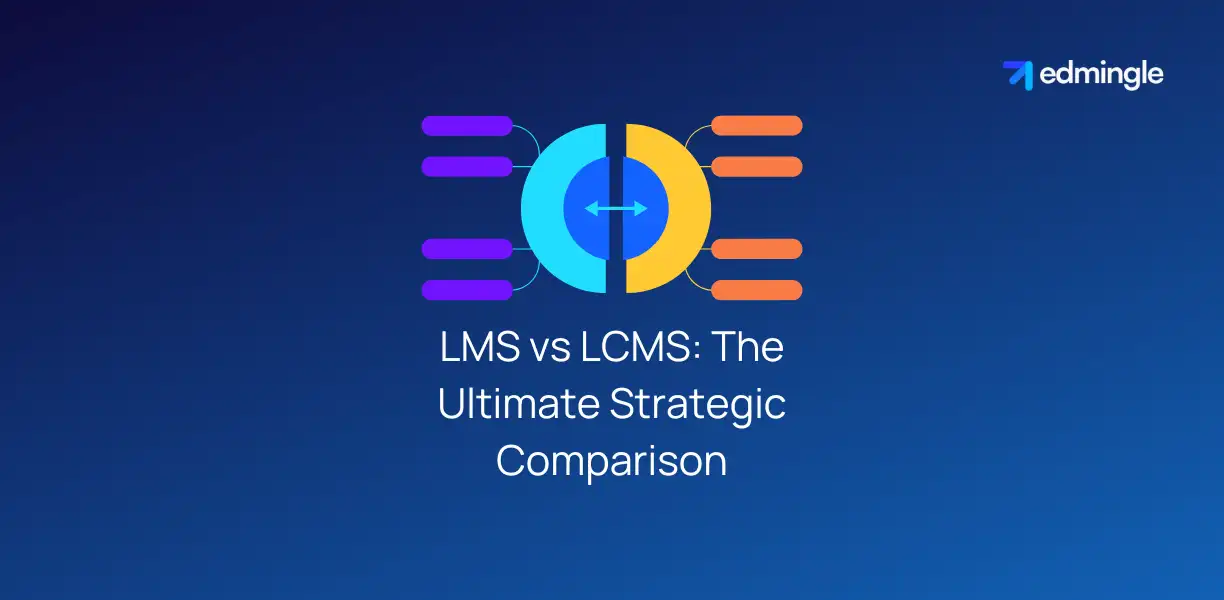
Today, the debate between LMS and LCMS is more relevant than ever.
And this will remain so as organizations and educational institutions strive to offer the most efficient, scalable and personalized learning experiences.
In this blog, we’ll deep dive into the world of LMS vs LCMS. Here, we’ll unravel the layers of each system, explore their distinct features. And ultimately guide you through making a strategic decision.
One that aligns with your unique learning goals and organizational objectives.
What is the Basic Difference Between LCMS and LMS?
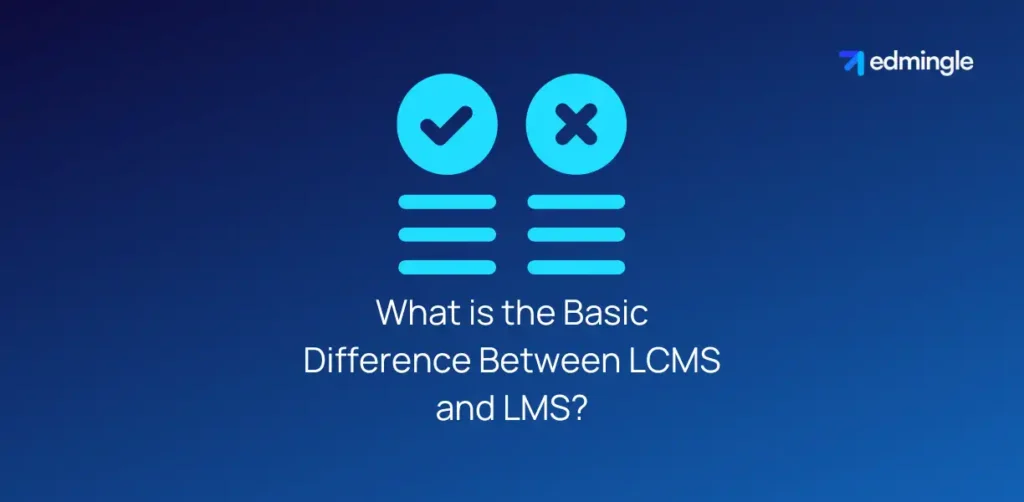
The basic difference between LCMS and LMS lies in their primary functions.
An LCMS focuses on the creation, management and storage of eLearning content. Thereby, allowing authors to develop, edit and reuse it efficiently.
On the other hand, an LMS is designed to deliver, track and manage the learning process itself. This includes administering courses, handling registrations and tracking learners’ progress and performance.
Base line? While an LCMS deals with the content aspect of eLearning. An LMS handles the administrative side of the learning process.
Also Read: Difference Between LMS and TMS.
What is an LMS?
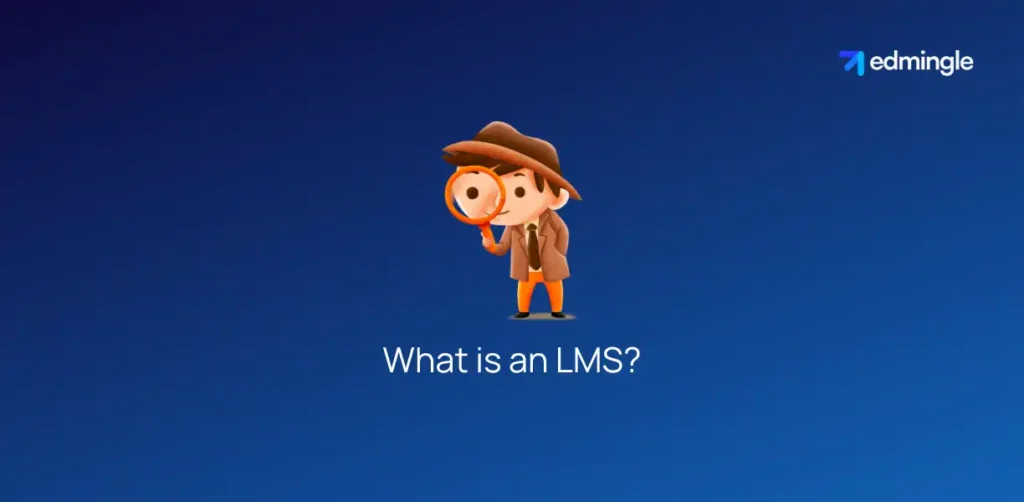
A learning management system is a software used to plan, implement and assess a specific learning process.
It allows trainers to create, distribute & manage educational content. While monitoring student participation and assessing student performance.
It provides a framework that handles all aspects of the learning process. Hence, serving as a platform for online learning materials and courses.
You might also like to read: Difference Between Learning and Training.
Key LMS Benefits
| Scalability & Accessibility: Easily accommodates a growing number of learners. While allowing them to access materials at anytime, from anywhere. | Tracking and Reporting: Offers tools to monitor learners’ progress and performance. |
| Efficiency: Streamlines the training process, saving time and resources. Cuts OpEx and other overheads. | Customization: Can be tailored to meet the specific needs of various learning environments. |
LMS Use Cases
- Employee Training: For onboarding, compliance training and professional development.
- Higher Education: To manage courses, assignments and student interaction.
- K-12 Education: Enhancing K-12 classroom learning and facilitating remote learning.
- Upskilling: Supports continuous learning and certification.
LMS Core Features
| Course & User Management: Create and distribute learning materials while enrolling and tracking learners’ progress. | Reporting and Analytics: Insights into learning patterns and outcomes. |
| Assessment Tools: Test and evaluate learners’ knowledge. | Mobile Learning: Support for learning on-the-go through mobile compatibility. |
Learn about complete learning management system features.
LMS Examples
- Moodle: Moodle is an open-source LMS, widely used in education.
- Canvas: Known for its user-friendly interface and flexibility.
- TalentLMS: Commended by small businesses for training and development.
What is an LCMS?
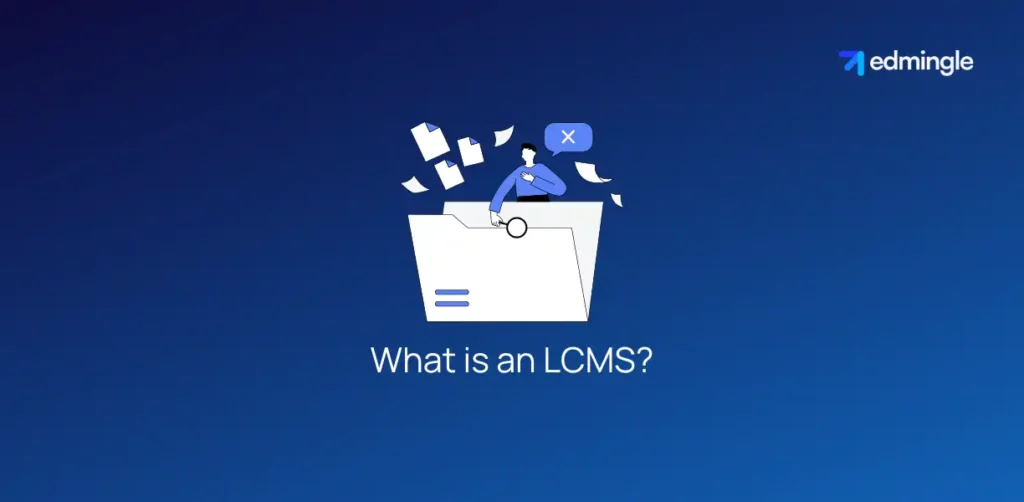
A learning content management system is a software that allows users to create, manage, store and deliver eLearning content.
It focuses on the development, management and publishing of the materials that learners will use.
It includes collaborative tools for content creators, subject matter experts, and instructional designers.
Key LCMS Benefits
| Content Reusability & Development: Allows for easy updating and repurposing of resources. While streamlining the creation of learning materials. | Centralized Content Management: Stores educational materials in one location for easy access. |
| Collaborative Authoring: Enables multiple contributors to work on resources simultaneously. | Targeted Learning: Facilitates personalized learning experiences. |
LCMS Use Cases
- eLearning Content Development: For creating and managing digital learning materials.
- Large Organizations: Where training needs are diverse and learning resources are frequently updated.
- Educational Publishers: To develop, manage and distribute educational content.
- MNCs: For consistent corporate training across global offices.
LCMS Core Features
| Content Authoring & Management: Tools to create interactive and engaging learning materials. It can also organize and store all types of training materials. | Version Control: Keep track of changes and updates. |
| Publishing: Distribute it across various platforms and formats. | Collaboration Tools: Enable teamwork in content development programs. |
LCMS Examples
- Adobe Captivate Prime: A good tool for content authors, known for its separate authoring tool and other management tools.
- Kenexa LCMS: Offers robust management and scalability for enterprise-level use.
- Lectora: Popular for its powerful advanced authoring tools and ease of use.
- Xyleme: Specializes in e-learning content management and distribution for large organizations.
This comprehensive overview underlines the distinct roles and advantages of both platforms. Hence, illustrating their essential contribution to the landscape of eLearning and digital education.
Key Difference Between LMS and LCMS (LMS vs. LCMS)
The table below highlights all the key difference between an LMS and LCMS.
| Aspect | LMS | LCMS |
|---|---|---|
| Primary Objective | To deliver, track and manage training and educational courses. | To create, manage and store eLearning content. |
| Focus Area | Learner management and course delivery. | Content development and lifecycle management. |
| Main Users | Educators, training managers, corporate trainers & teams, HR professionals. | Creators, instructional designers, subject matter experts. |
| Functionality | Manages user registrations, tracks progress and performance, administers assessments. | Supports content authoring tools, editing, publishing and reusing across different courses. |
| Content Creation | Limited to organizing and delivering. | Extensive tools for creating and editing. |
| Content Management | Not designed for management or content creation process. | Centralized platform for a repository with version control. |
| Delivery Mechanism | Delivers online content but does not specialize in creation. | May include features to deliver directly or integrate with an LMS for delivery. |
| User Interaction | Tracks and reports on user interactions, online assessments and completions. | Focuses on interaction rather than learner tracking. |
| Collaboration | Primarily supports learner collaboration through forums, chats, etc. | Enables collaboration among developers and designers in creation. |
| Personalization | Tailors learning paths and experiences based on learner data. | Allows for the customization for different audiences or platforms. |
| Analytics and Reporting | Comprehensive analytics on learner progress, course completions and skill gaps. | Content-focused analytics, such as usage and effectiveness. |
| Integration | Often integrates with other systems like HRIS for user management. | May integrate with LMS for delivery and other tools for creation. |
| Scalability | Designed to scale with an increasing number of learners. | Scales with the amount of content and complexity of development processes. |
| Cost | Can be significant, depending on the features and scale. | Costs associated with creation and management capabilities. |
This comparison emphasizes their unique features and purposes in e-learning and content management.
8 Similarities Between LMS and LCMS
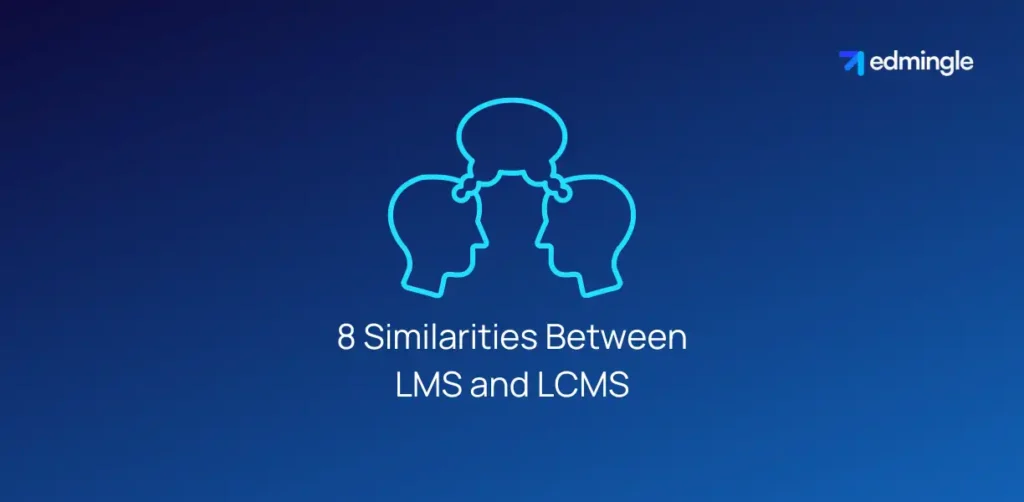
Despite their differences, both the systems share several key similarities. These include:
- Focus: Both are designed to support eLearning environments.
- Tech-Driven: They leverage technology to enhance processes & accessibility.
- Access Control: Both systems offer user access control features. Thereby, allowing administrators to manage who can view or interact with certain courses.
- Content Delivery: Although their approaches differ. Both systems can deliver educational content to learners in multiple formats.
- Customization and Scalability: Both are comprehensive platforms that can be customized to fit the specific needs of an organization. While scaling to accommodate growth in users or courses.
- Integration Capabilities: They can often be integrated with other systems for seamless workflows and learning experiences. This includes HR systems, scheduling & collaboration tools and payment gateways.
- Reporting and Analytics: Both include reporting and analytics features. Thus, enabling organizations to track usage, engagement and effectiveness of training programs.
- Support for Standards: They typically support eLearning standards like SCORM and xAPI. To ensure compatibility and tracking of learning activities across different e-learning platforms.
These similarities underline the complementary roles that both play. Thus, highlighting their shared goal of enhancing the educational experience through technology.
What is a CMS?

CMS, short for, Content Management System, is a software application. Designed to help users create, manage and modify digital content. Without the need for specialized technical knowledge.
Primarily used for web and enterprise content management, these offer a user-friendly interface. This enables easy creation & publishing of content, such as text, images and videos.
How is a CMS Different from an LCMS and LMS?
While they may share some overlapping functionalities, primarily in content management and delivery. Their core purposes and capabilities significantly differ.
- A CMS is focused on the creation, management, and publication of content on websites and intranets.
- An LCMS is specialized with tools for developing, storing and organizing educational content. Which can then be published or delivered through an LMS.
- An LMS is designed to facilitate the delivery, tracking and administration of user registration, progress and assessments.
Read in-detail: Difference Between CMS and LMS.
What is an LXP/LEP?
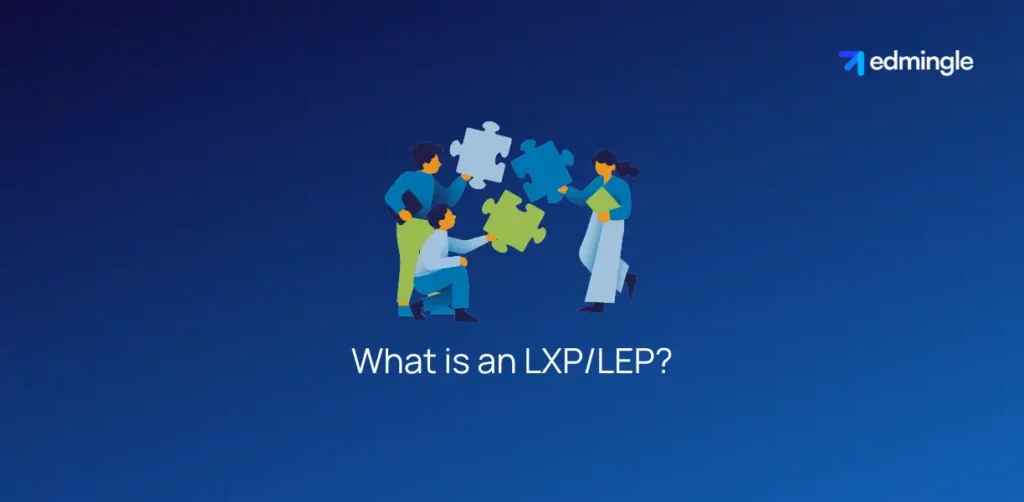
A learning experience platform (LXP) or learning engagement platform (LEP) represents a newer, more learner-centric approach. Mainly towards online education and professional development.
These focus on delivering personalized learning experiences. Majorly by leveraging AI and ML to curate and recommend content. Based on individual learning preferences, needs and performance.
They emphasize self-directed learning & social learning features. Hence, making learning more engaging and relevant for users.
How is an LXP/LEP Different from an LCMS and LMS?
- Personalization and Engagement: Unlike LCMS and LMS, which are more organization-centric, these platforms are learner-centric. They emphasize on personalized learning paths and experiences.
- Content Aggregation and Curation: These integrate content from multiple sources, including external providers and user-generated content. They also use AI to recommend relevant learning opportunities.
These distinctions highlight the evolving landscape of digital learning platforms. With each type offering unique features tailored to specific environments, goals and audiences.
Which is Better and How to Choose? LCMS vs LMS
Choosing between an LCMS and an LMS depends on your organization’s specific needs & goals. And also on the state of your current content and learning delivery infrastructure.
| Content Creation and Management: If your primary need is creating, organizing and managing digital learning content efficiently. An LCMS may be the better choice. |
| Learning Delivery and Tracking. If you’re focused on delivering training courses to learners, tracking their progress & assessing performance. An LMS will better serve your needs. |
Now that you know what you need, here’s how to choose one:
- Assess Your Needs: Consider factors such as the volume of content you produce, the need for content reuse. And the level of learner engagement and tracking required.
- Consider Your Audience: Understand the needs of your learners. If personalization and adaptive learning paths are crucial. The choice might lean towards an LMS with strong analytics and user management features.
- Evaluate Integration Capabilities: Consider whether the platform needs to integrate with existing systems and how easily this can be achieved with each option.
- Budget and Resources: Evaluate the cost implications of each system, including setup, subscription and maintenance costs. Against your budget and the resources you have for content creation and learning management.
- Future Scalability: Think about future growth in terms of content volume, learner numbers and evolving learning needs. Choose a system that can scale with your organization.
- Feature Set: Review the specific features offered by each system. Including customization options, analytics, mobile accessibility and support services. To ensure they align with your organizational goal.
Ultimately, making a choice is not about which is better in a general sense. But which better suits your specific needs. In some cases, a combination of both may be the most effective solution.
Conclusion
As we close the chapter on this comprehensive exploration of LMS vs LCMS, it’s clear that today’s landscape is rich with options.
And each option is tailored to meet different educational and organizational needs. This journey has underscored the importance of aligning tech choices with specific learning objectives and organizational goals.
Remember, the goal is not just to adopt technology for the sake of innovation. But to enhance the efficiency, scalability and personalization of learning experiences.
FAQs on LMS vs LCMS
1.Can an LMS and LCMS work together?
Yes, an LMS and LCMS can work together seamlessly. While the latter focuses on the backend creation & management of content, the former can be used to deliver it to learners. This integration allows organizations to leverage the strengths of both systems.
2.Can I use an LCMS to deliver online courses directly to learners?
While an LCMS is primarily designed for content creation and management. Some LCMS platforms offer features to deliver content directly to individual learners. Or integrate closely with LMS platforms for content delivery.
3.Can an LMS replace an LCMS or vice versa?
While there is some overlap in functionality, both serve different purposes. And are, typically, not considered direct replacements for one another. Organizations may need both systems to fully support their eLearning strategy.

Leave a Reply